
|
From Brussels, we took an overnight train to
Prague, and then took a quick train to Sedlec. Sedlec is a small town
outside of Prague that really has just one claim to fame - the Kutna
Hora ossuary. Ossuaries - collections of bones - are common in Europe,
but the one in Sedlec is a little different. Several centuries ago,
somebody brought dirt from Jeruselum and sprinkled it on the graveyard of
the Kutna Hora monestary. Consequently, it became of very popular place
to be buried. As more and more people wanted to be buried there, they
started to run out of room. So, they dug up all the monks and poor
people that were buried there, stacked their bones in the monestary, and
buried more people outside... presumably, people with more money. After
a few years of this the remains of nearly 40,000 people were stacked
up in the monestary. Then, all the monks went away for a while, except
for a monk by the name of Rint. When they came back, he'd rearranged
things a little...
|
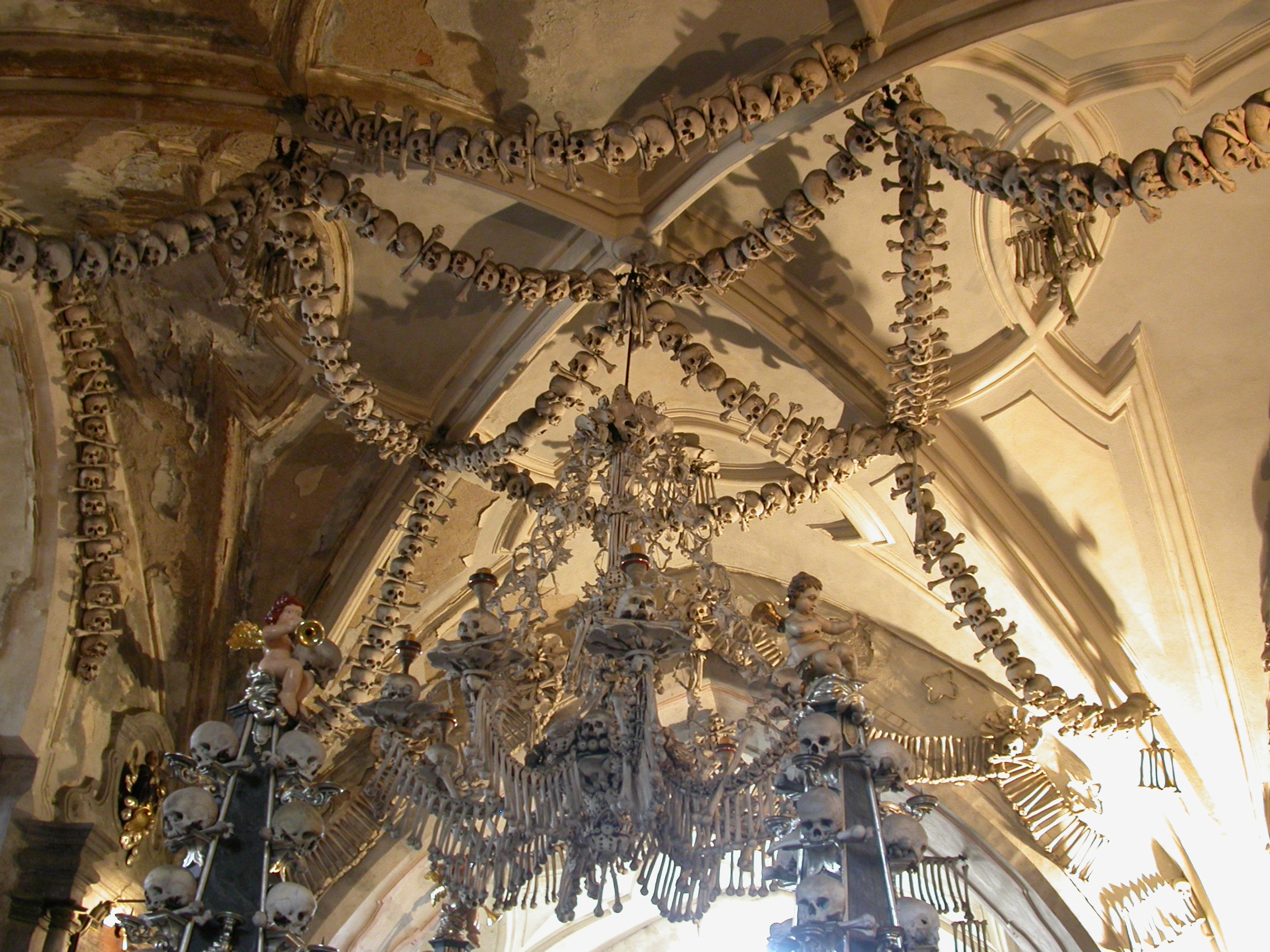
|
... and decorated the entire monestary with
human remains. I don't know if he was touched by the hand of God or
just went a little cuckoo being left alone with all those bones, but
there is a great amount of beauty in his work. Somehow, it seems more
respectful than simply letting the bones stack up in the back.
|
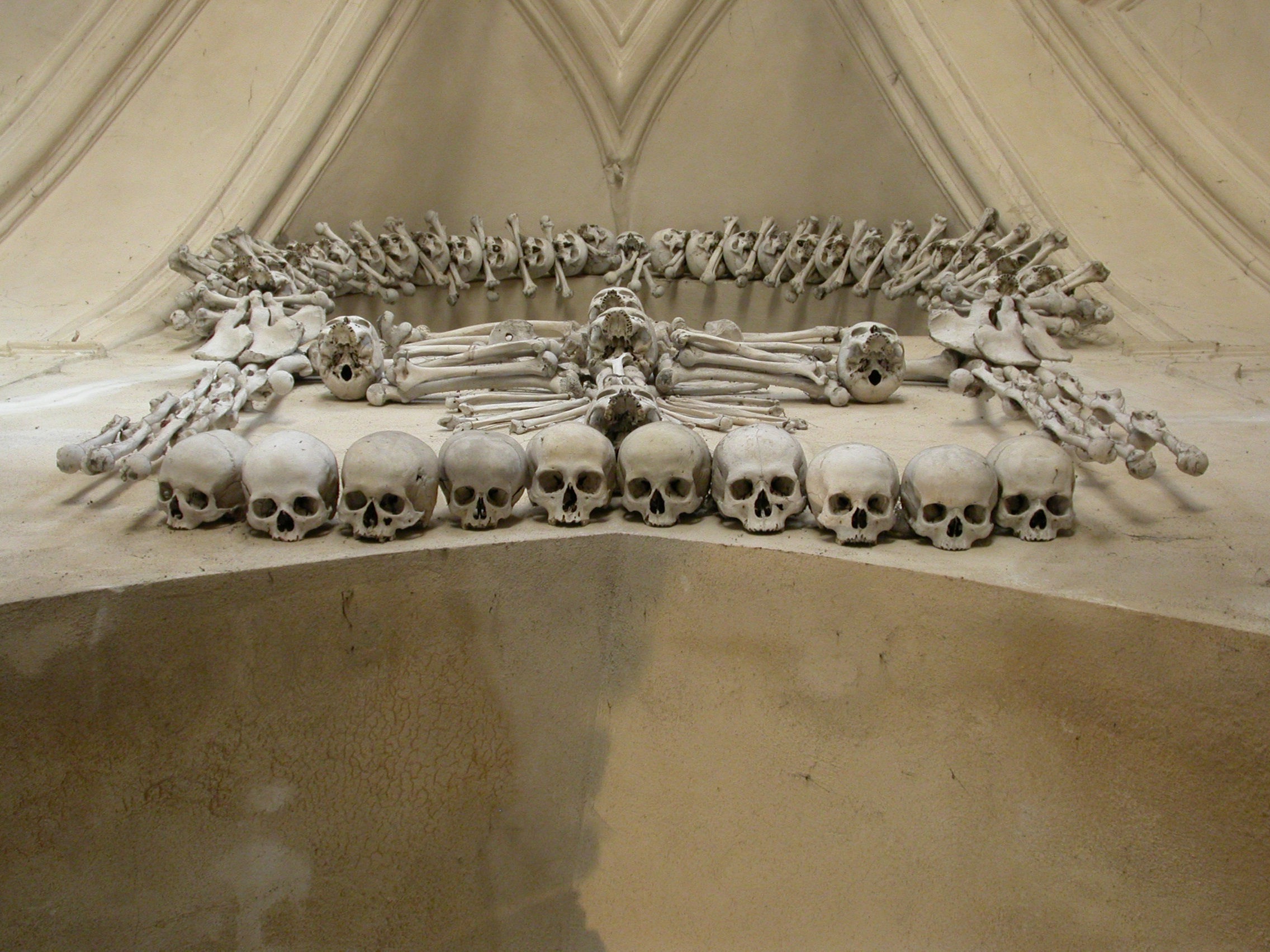
|
Nowhere in the building is a skull hanging
upside-down. These skulls hang over the entryway, gazing down upon you
as you enter. One can't help but try to imagine the faces that once
occupied the skulls.
|
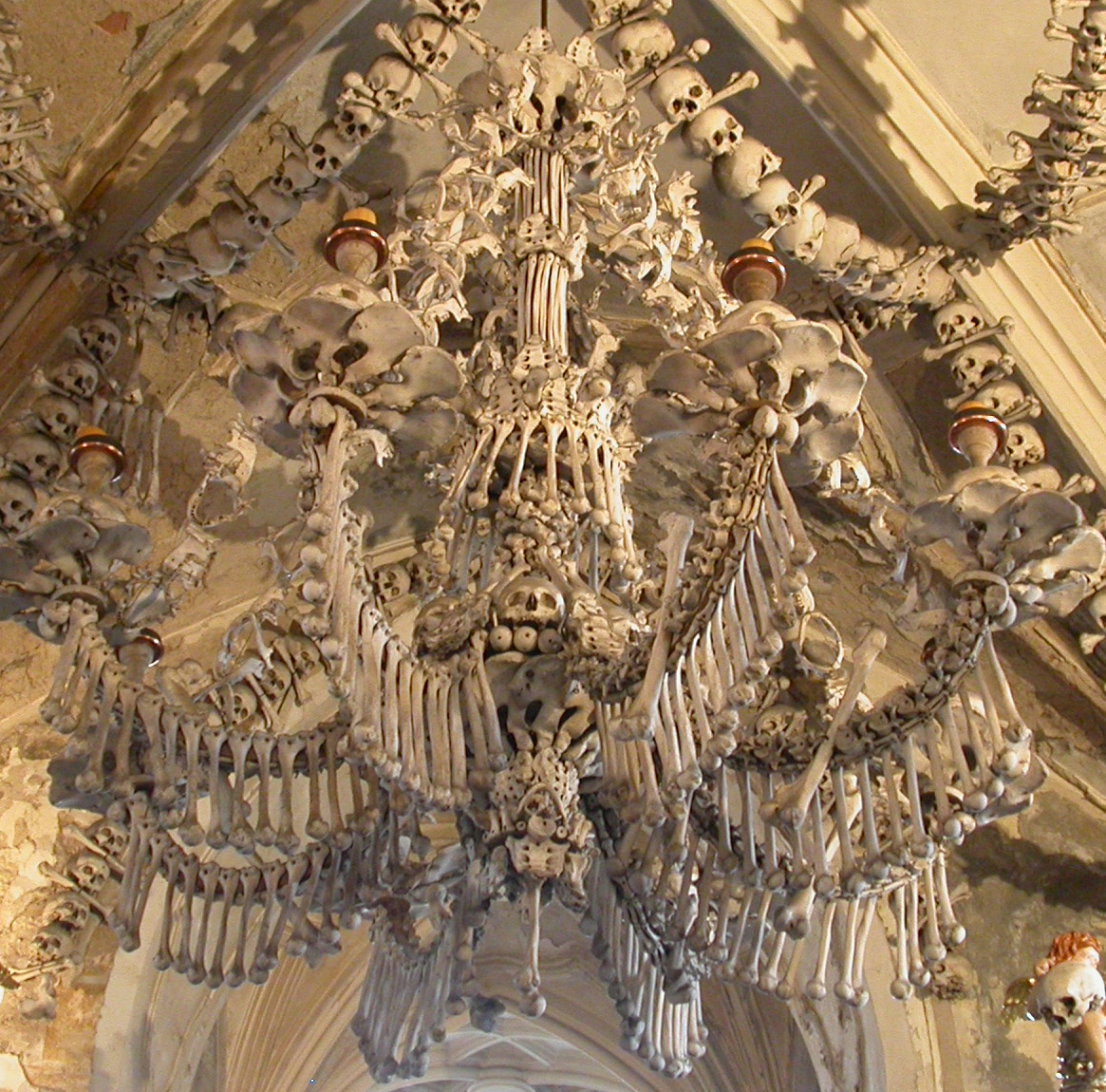
|
The centerpiece is a chandolier that contains
every bone in the human body... usually more than one of them.
|
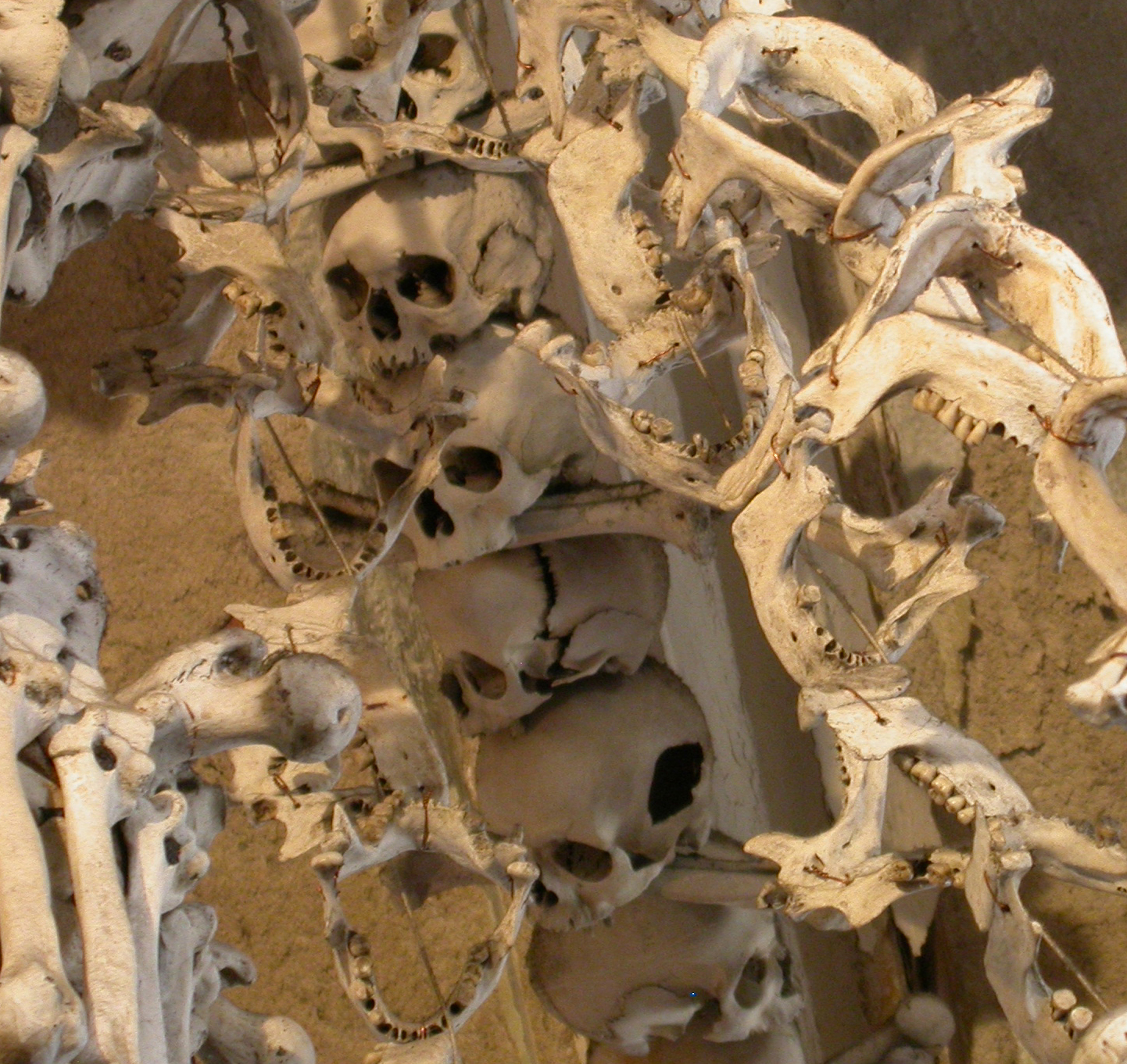
|
The chandolier is strung by chains of skulls
and jawbones.
|
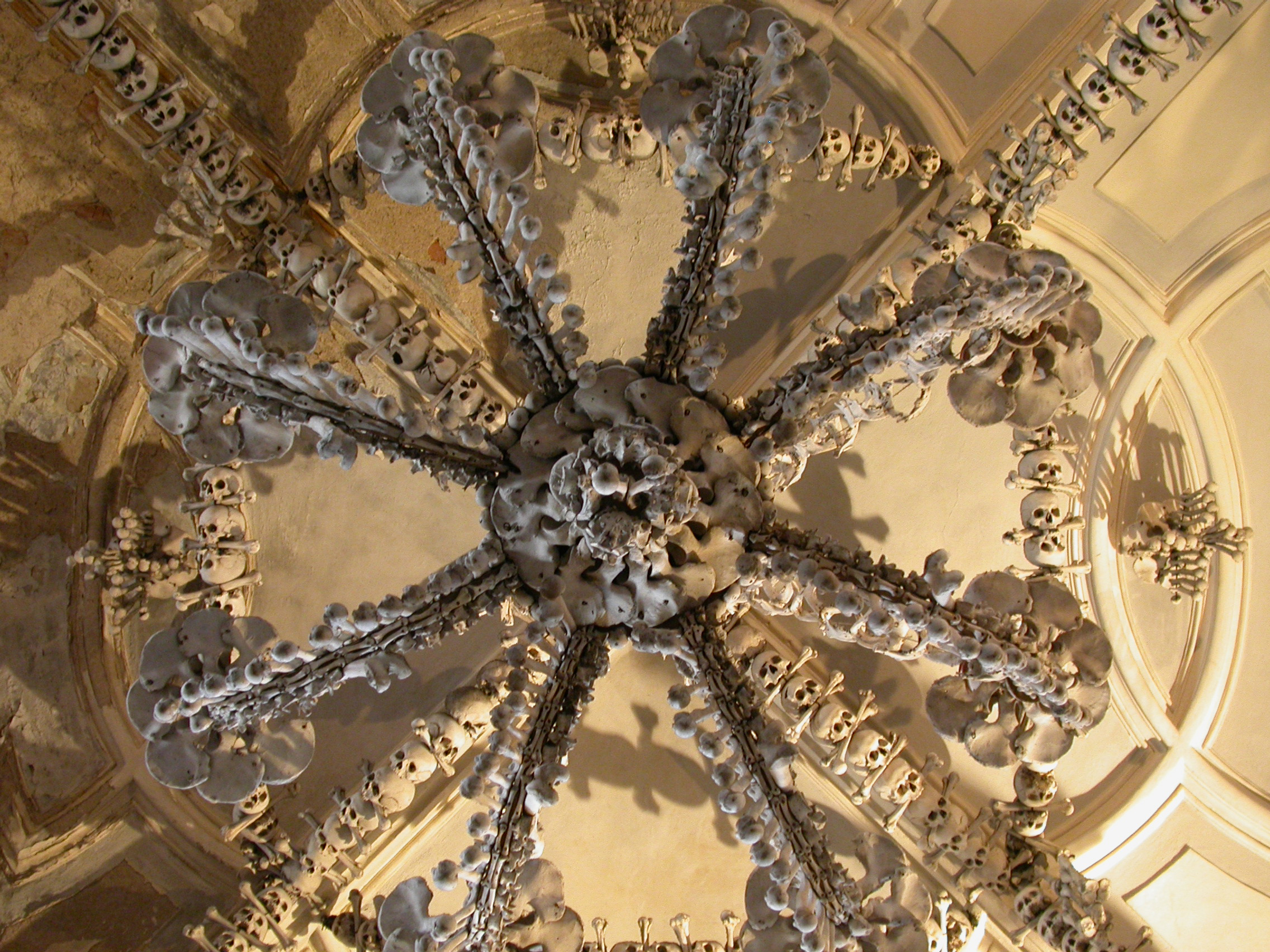
|
The view from below.
|
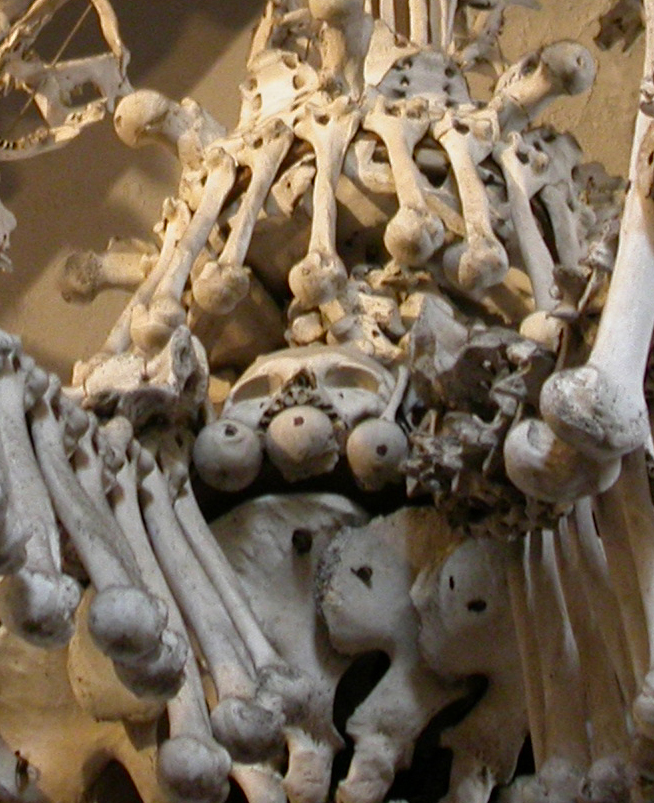
|
There is plenty of detail work to keep your
eyes occupied.
|
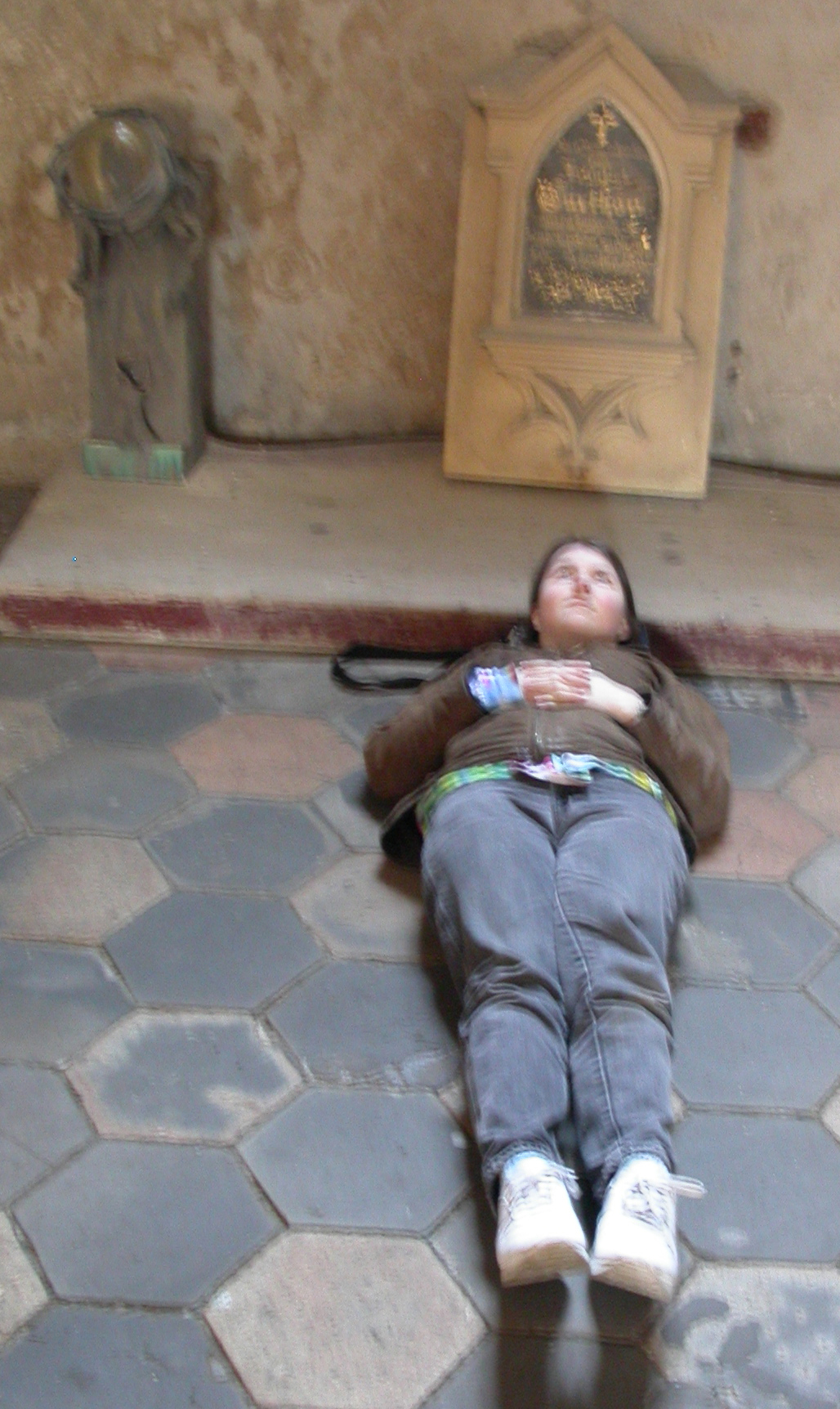
|
The somber atmosphere was not sufficiant to
keep us from playing around a little, of course.
|
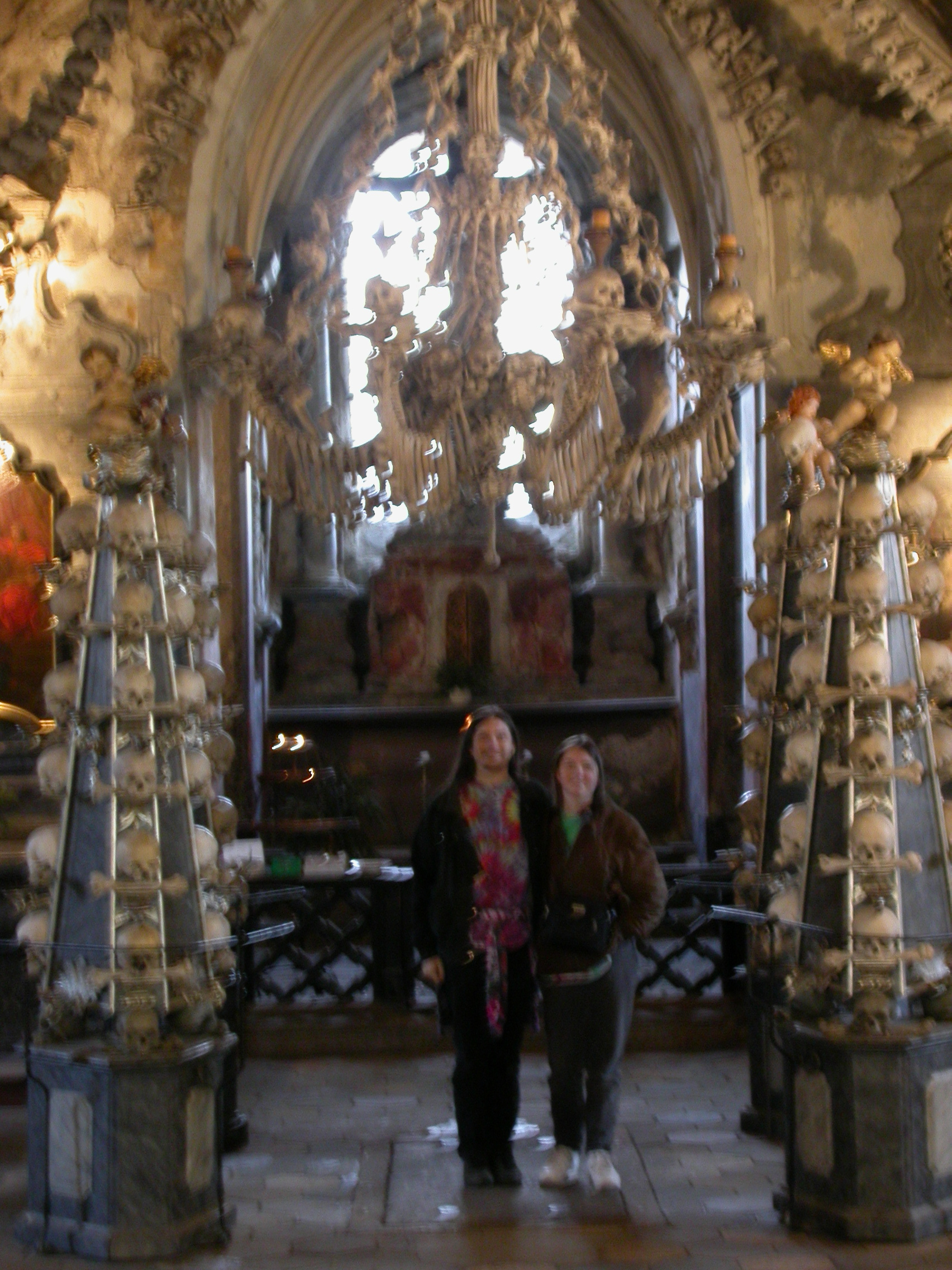
|
Nor did it stop us from taking the obligatory
tourist photos. Unfortunately, this one came out a little blurry.
|
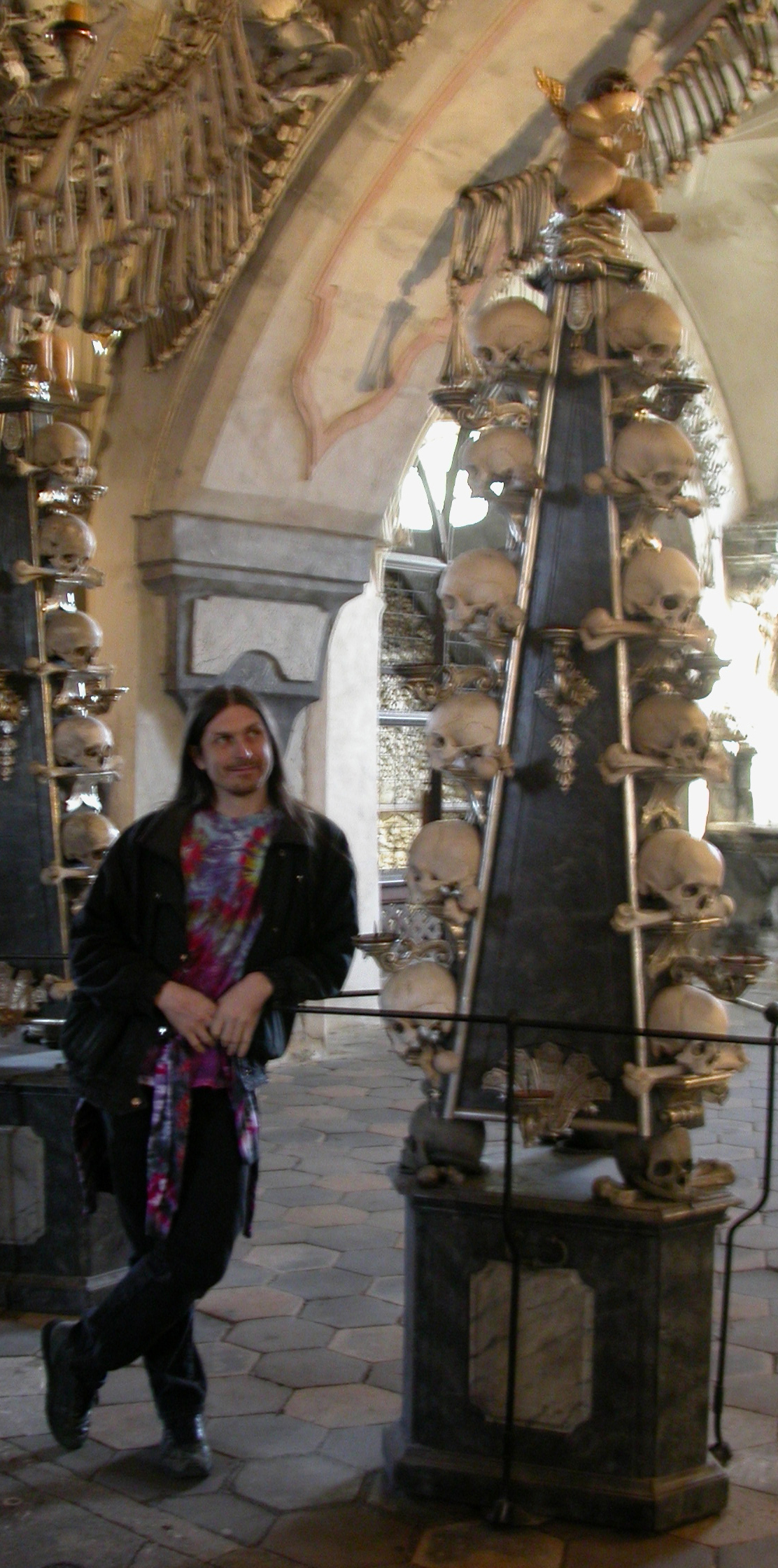
|
Eric poses, but his eyes are drawn to the
column of skulls nearby.
|
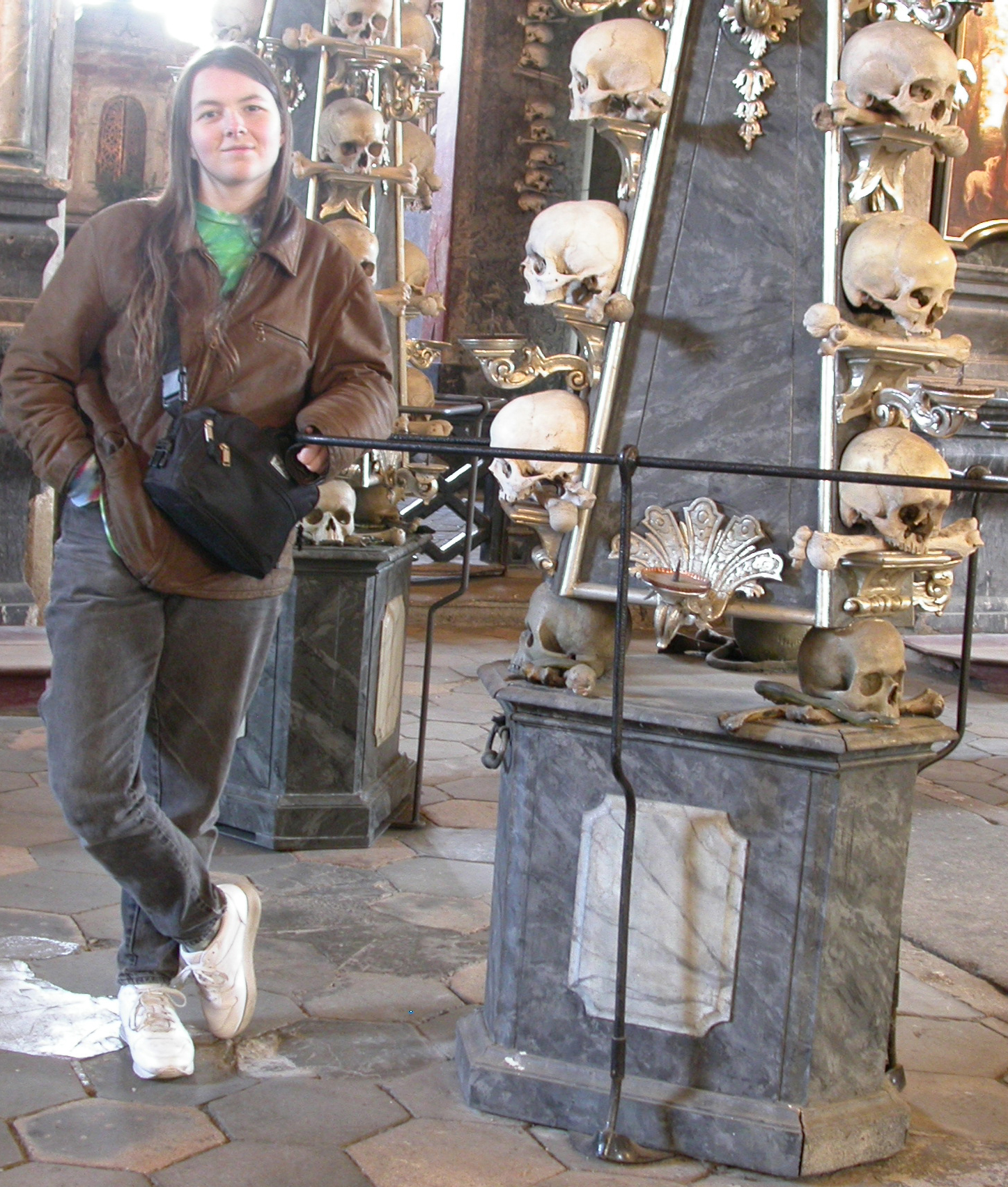
|
Ace poses next to the displayed skulls.
|
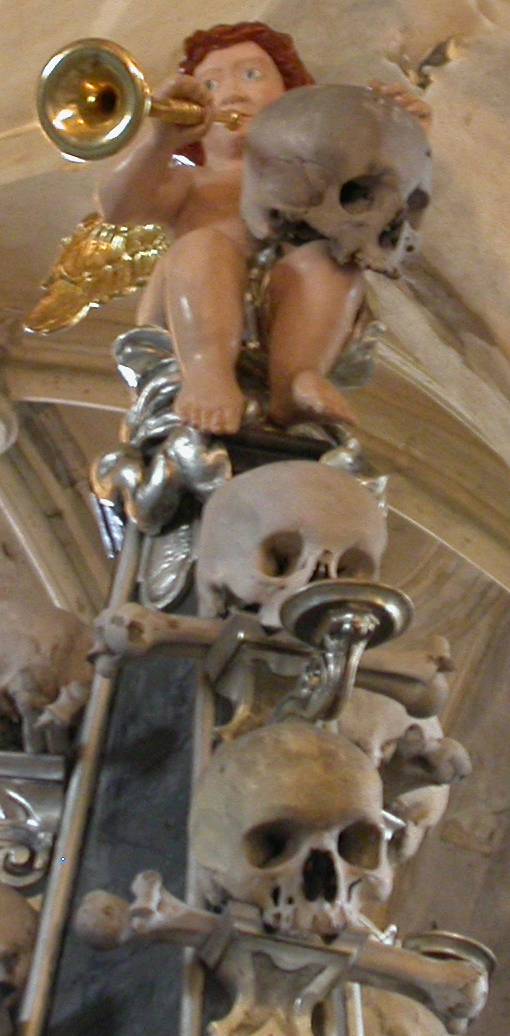
|
Of course, some of the things around here make
you wonder about the monk's sense of humor, too...
|
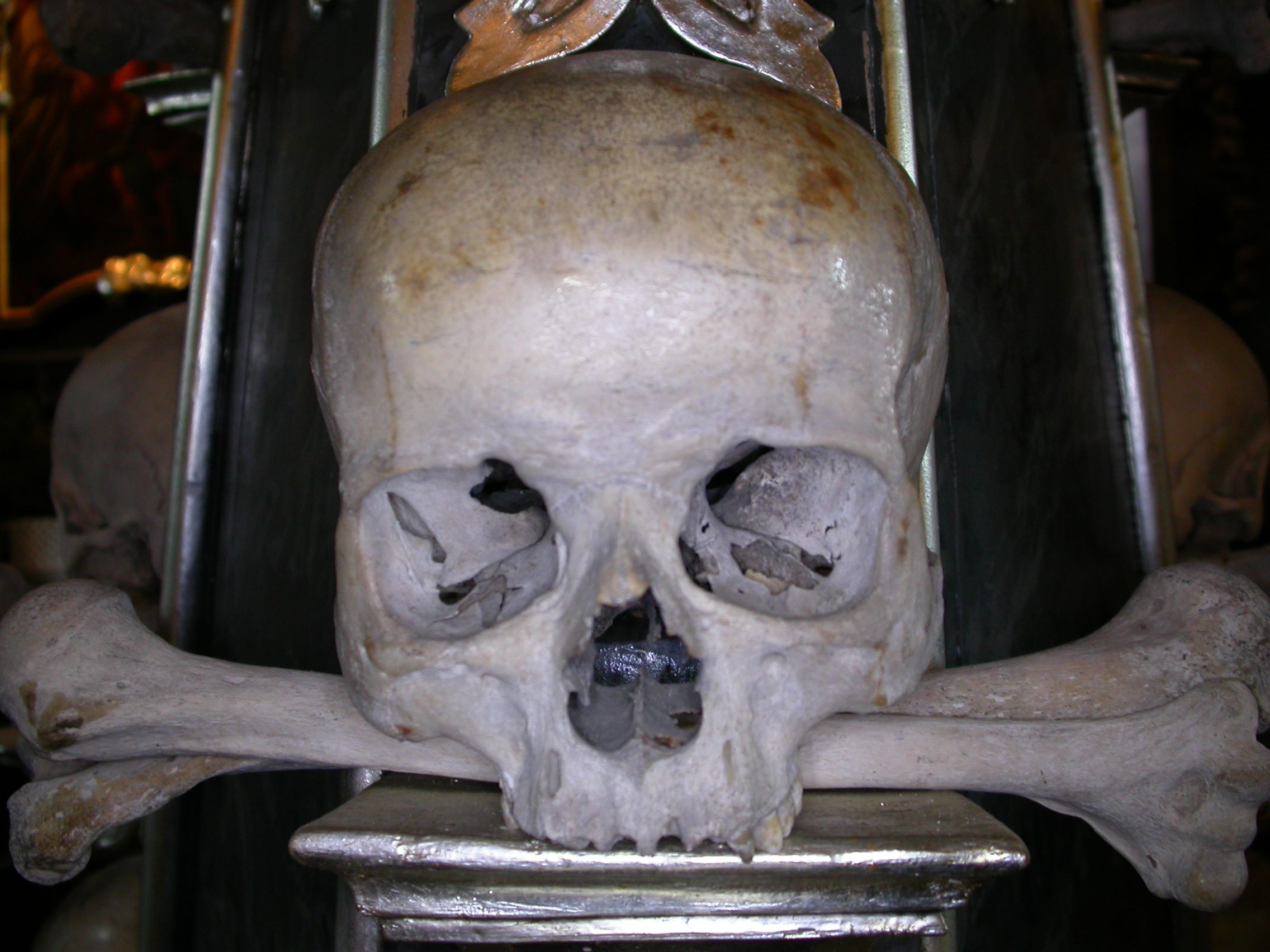
|
The columns allow you to get very close to
some of the skulls, and look them in the eyesockets.
|
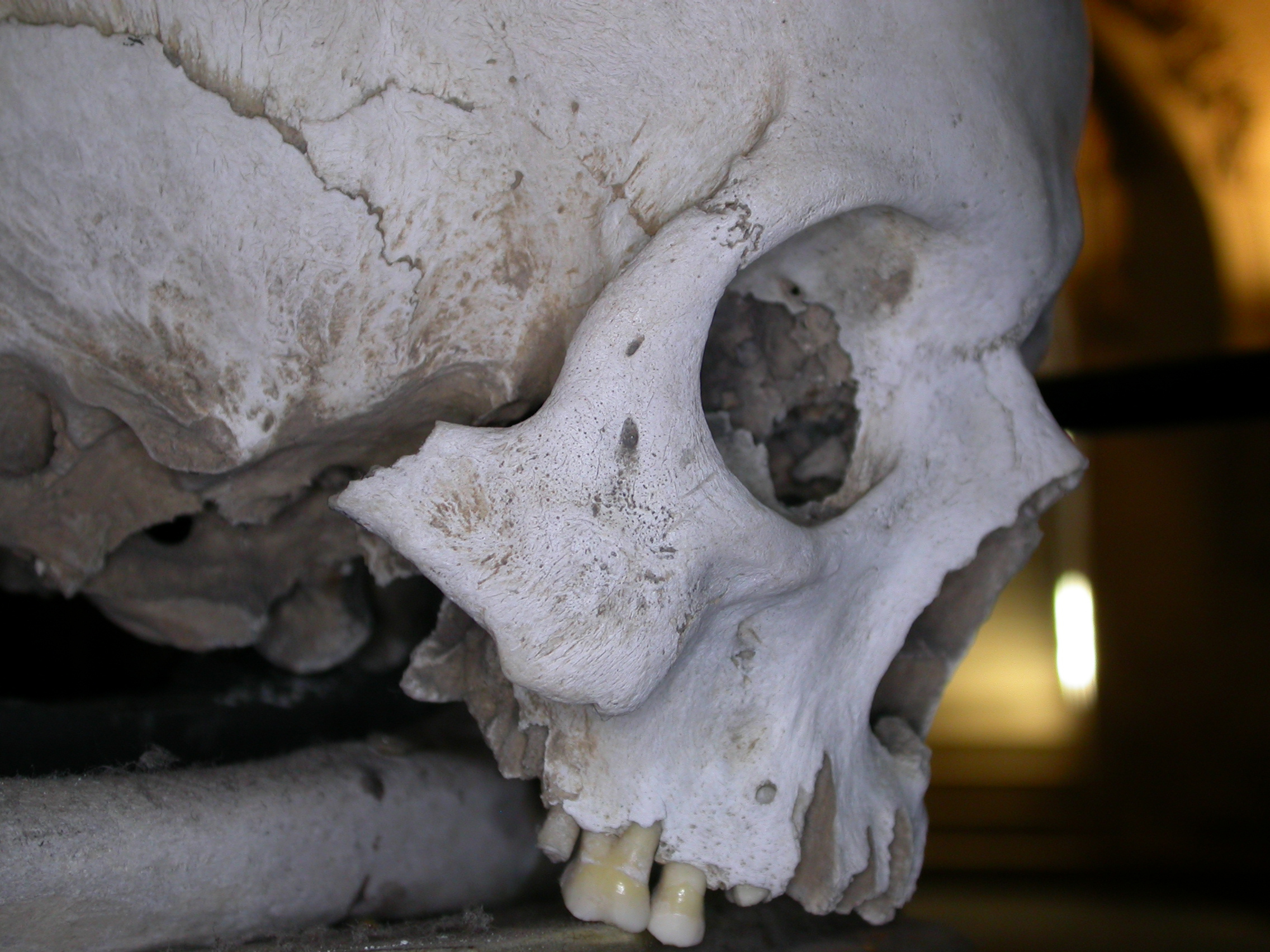
|
Very close...
|
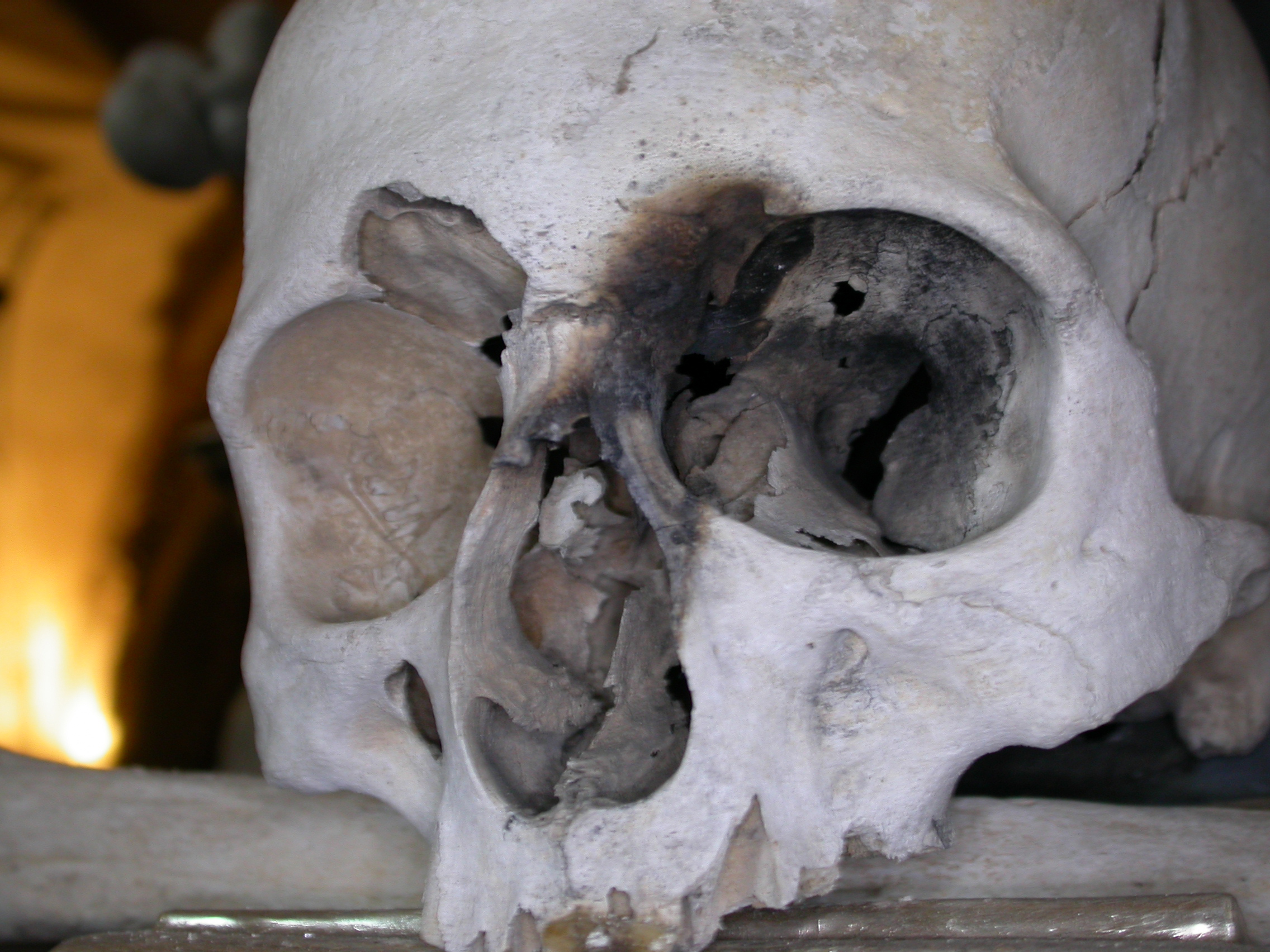
|
Very very close... What is the story behind
this one? Was he burned before or after death?
|

|
The lowest skulls often have snakes crawling
around them.
|
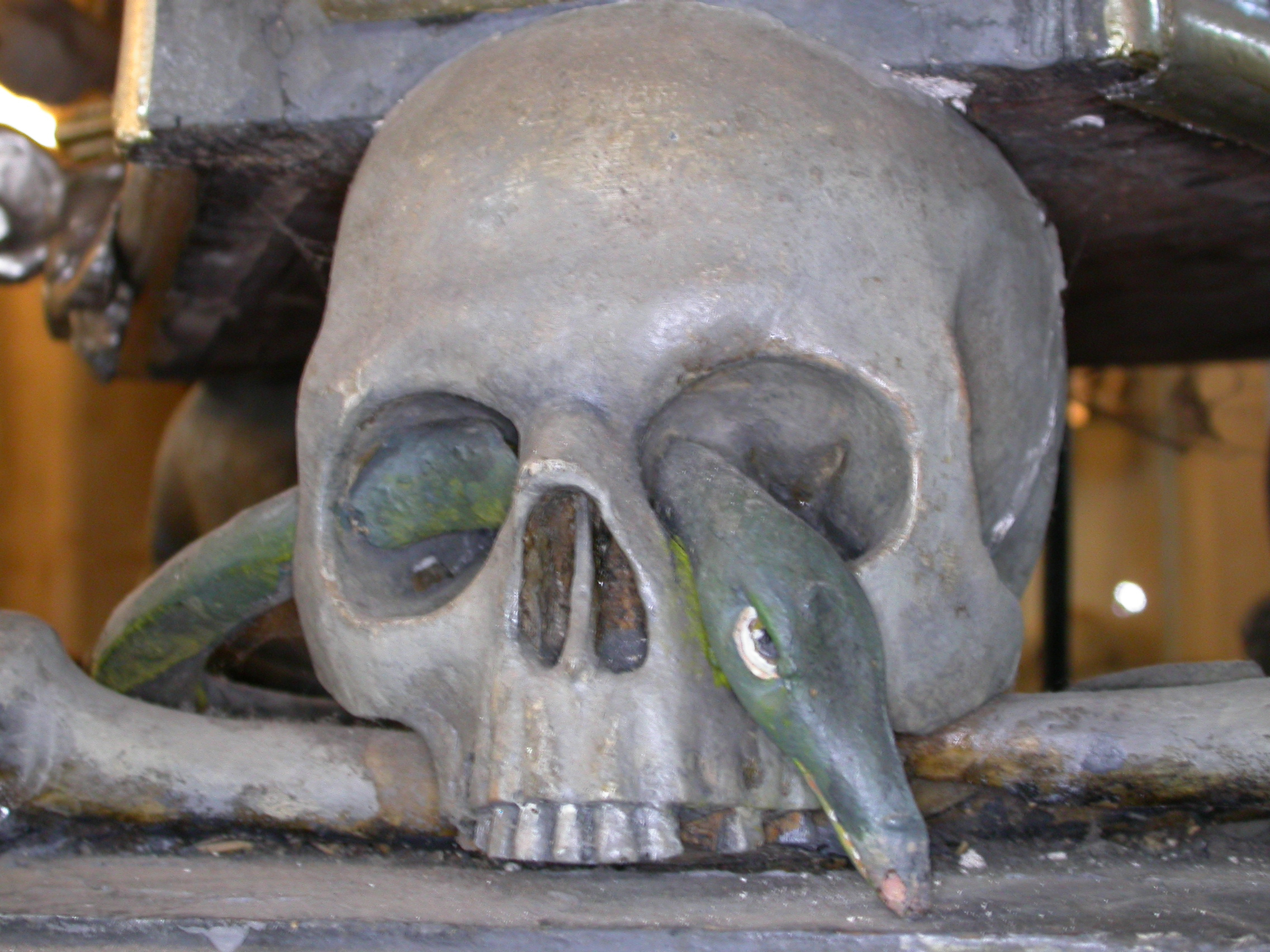
|
No two are exactly alike.
|
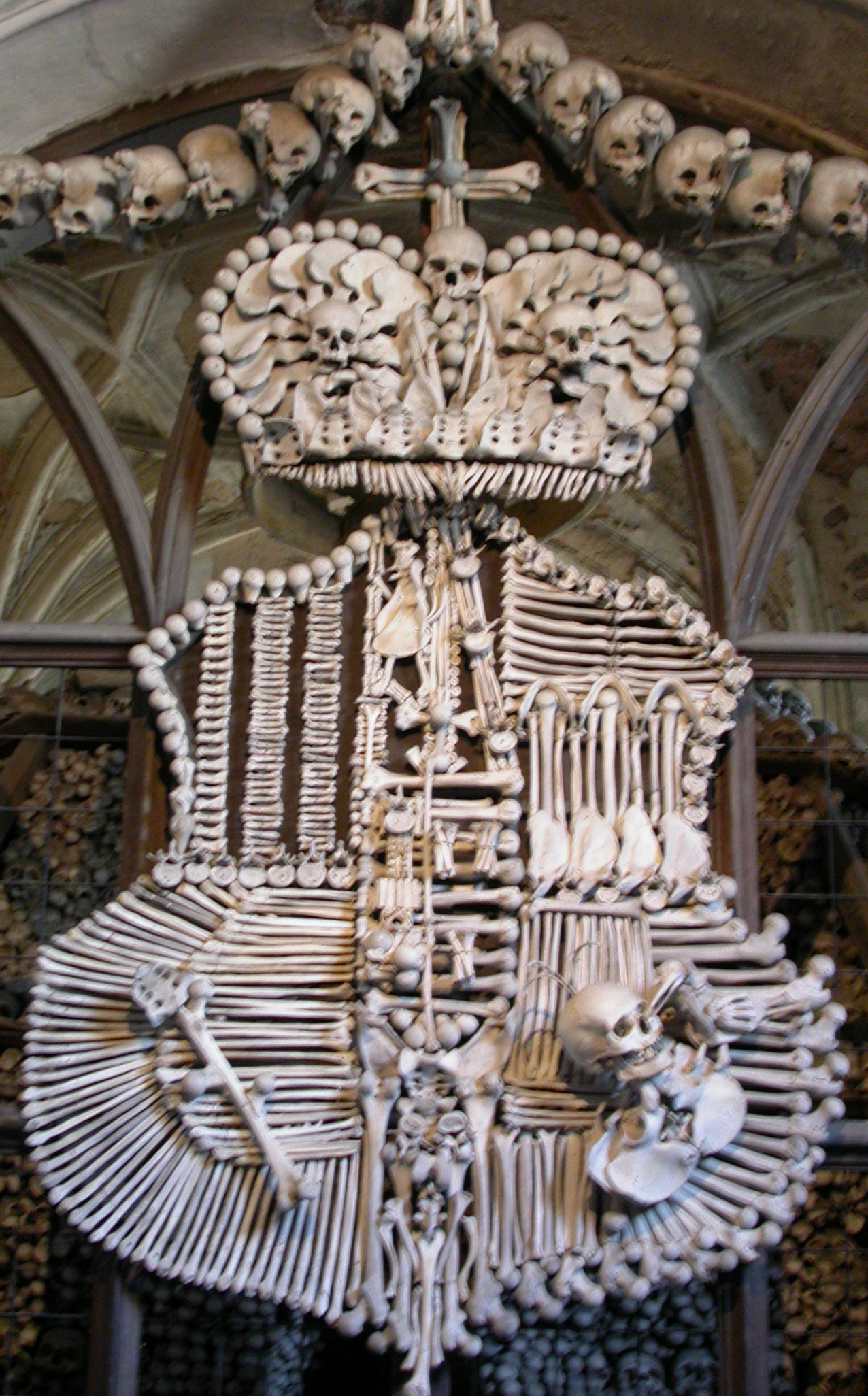
|
The chandolier is not the only sculpture in
the monestary. This is the coat of arms of a local family, rendered in
bones. One wonders what Brother Rint was trying to say...
|
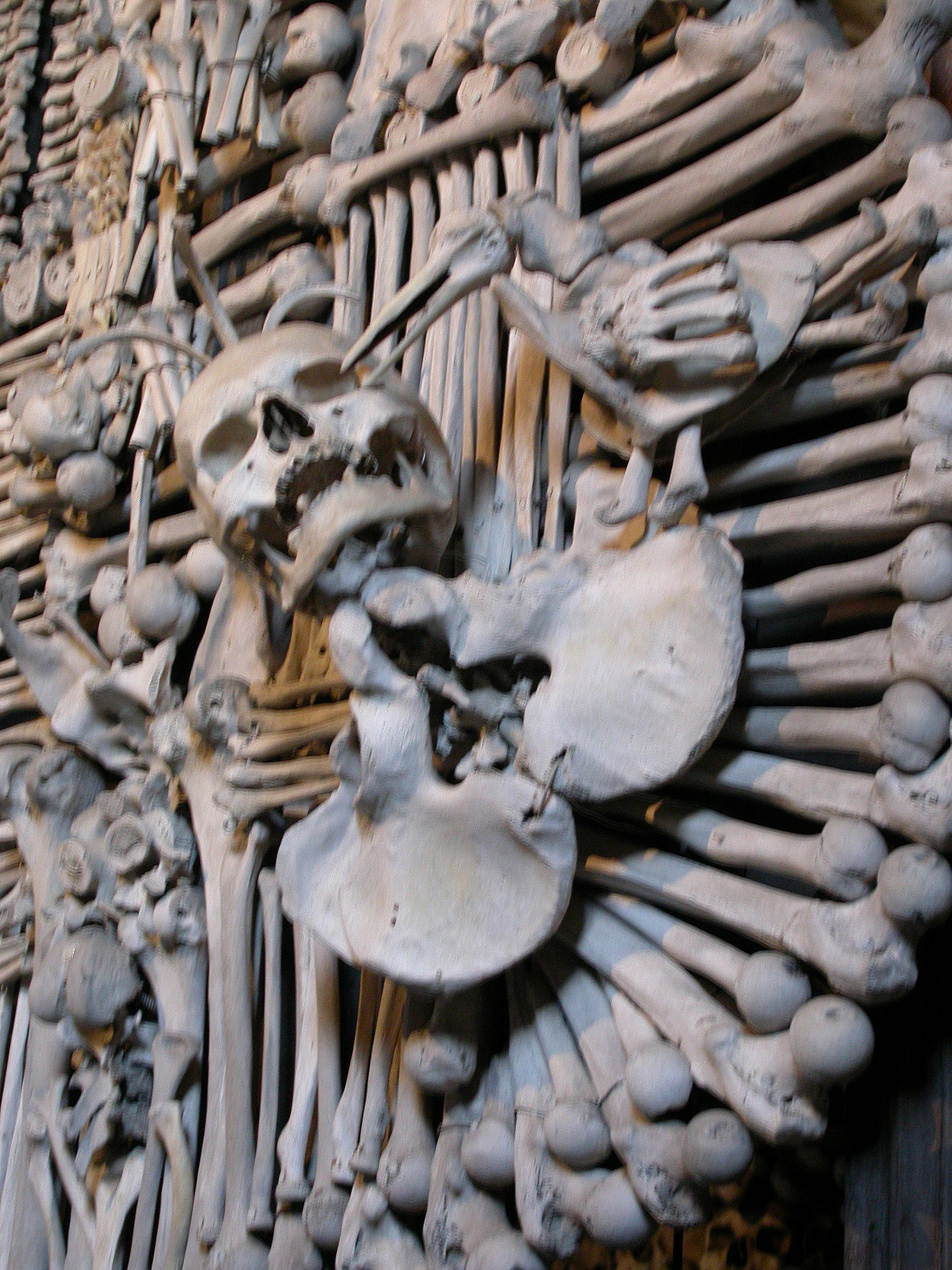
|
This particular detail of the coat of arms is
both beautifully rendered and very creepy.
|

|
There are two matching chalices on either side
of the entryway.
|
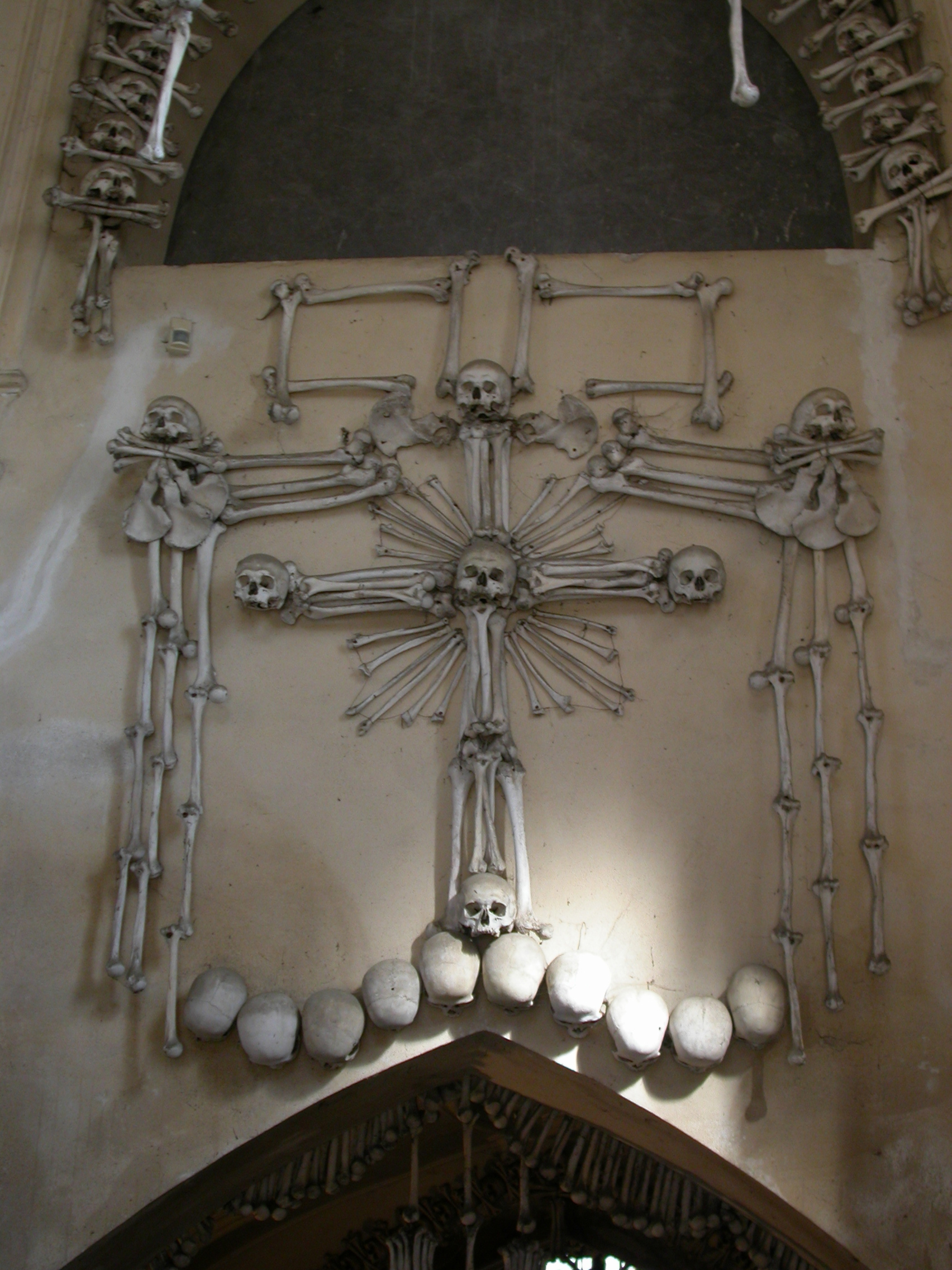
|
A cross marks the entrance to the main hall.
|
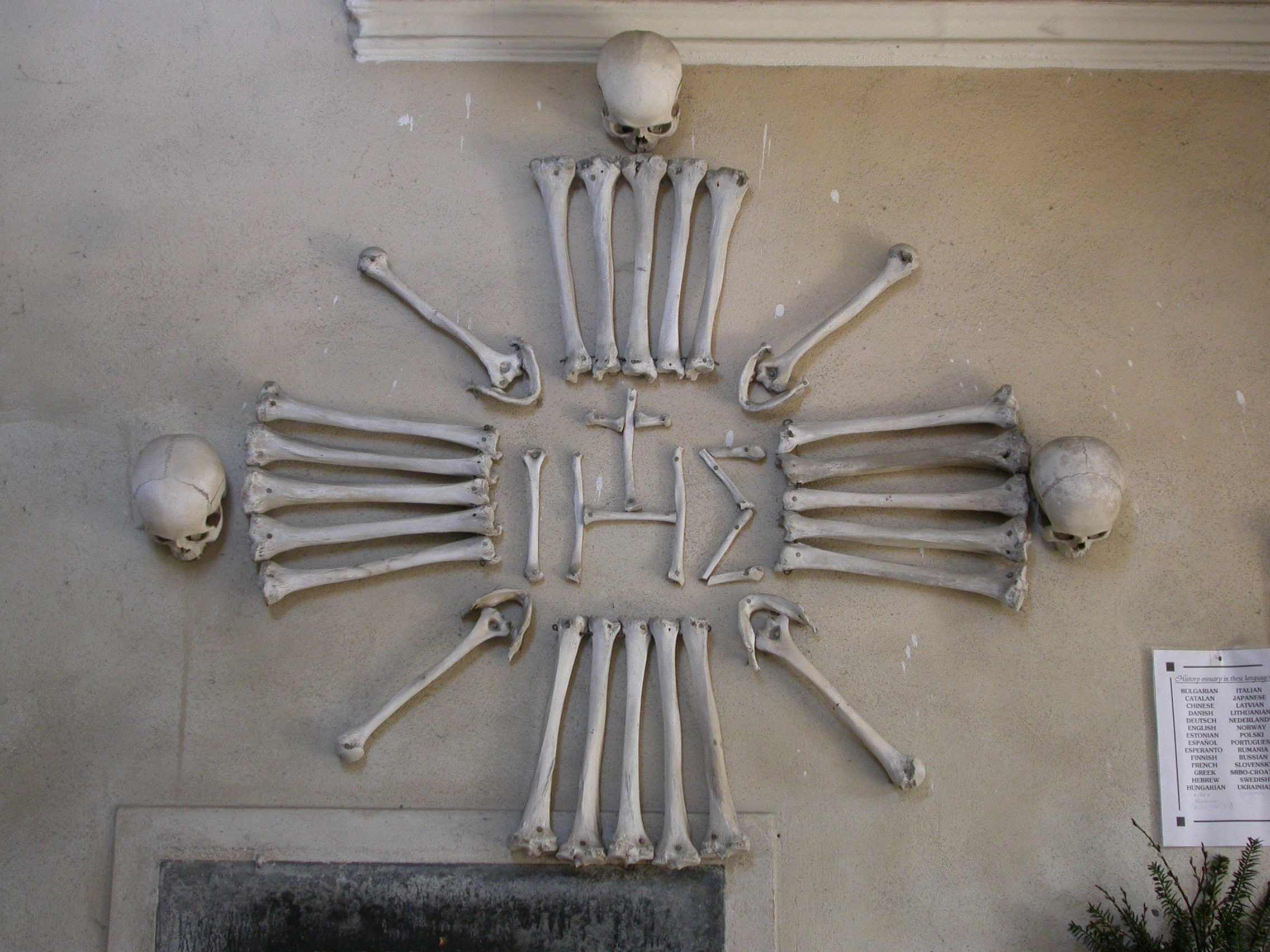
|
The walls bear other inscriptions of religious
significance.
|
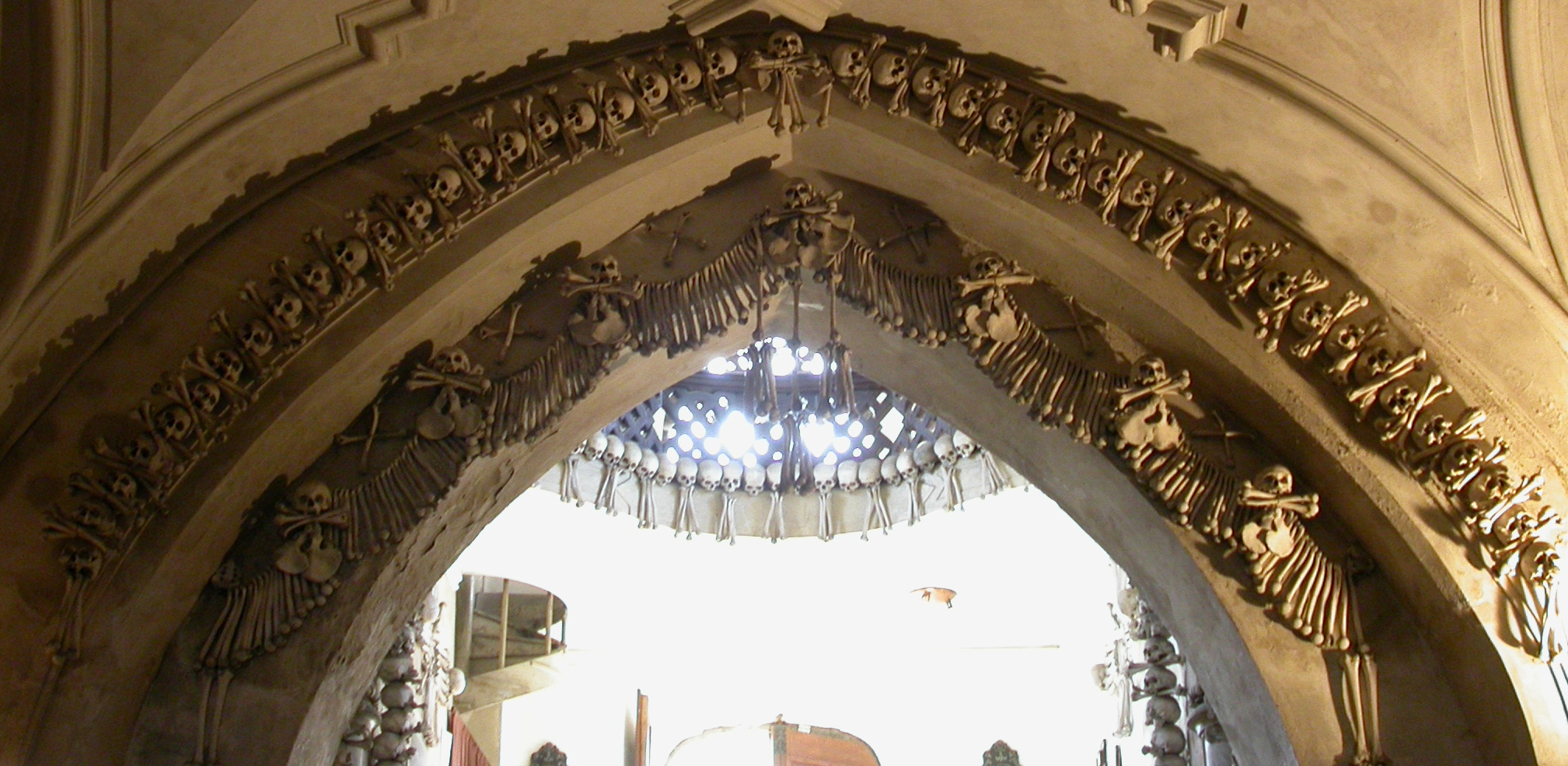
|
Every doorway bears still more decorations.
|
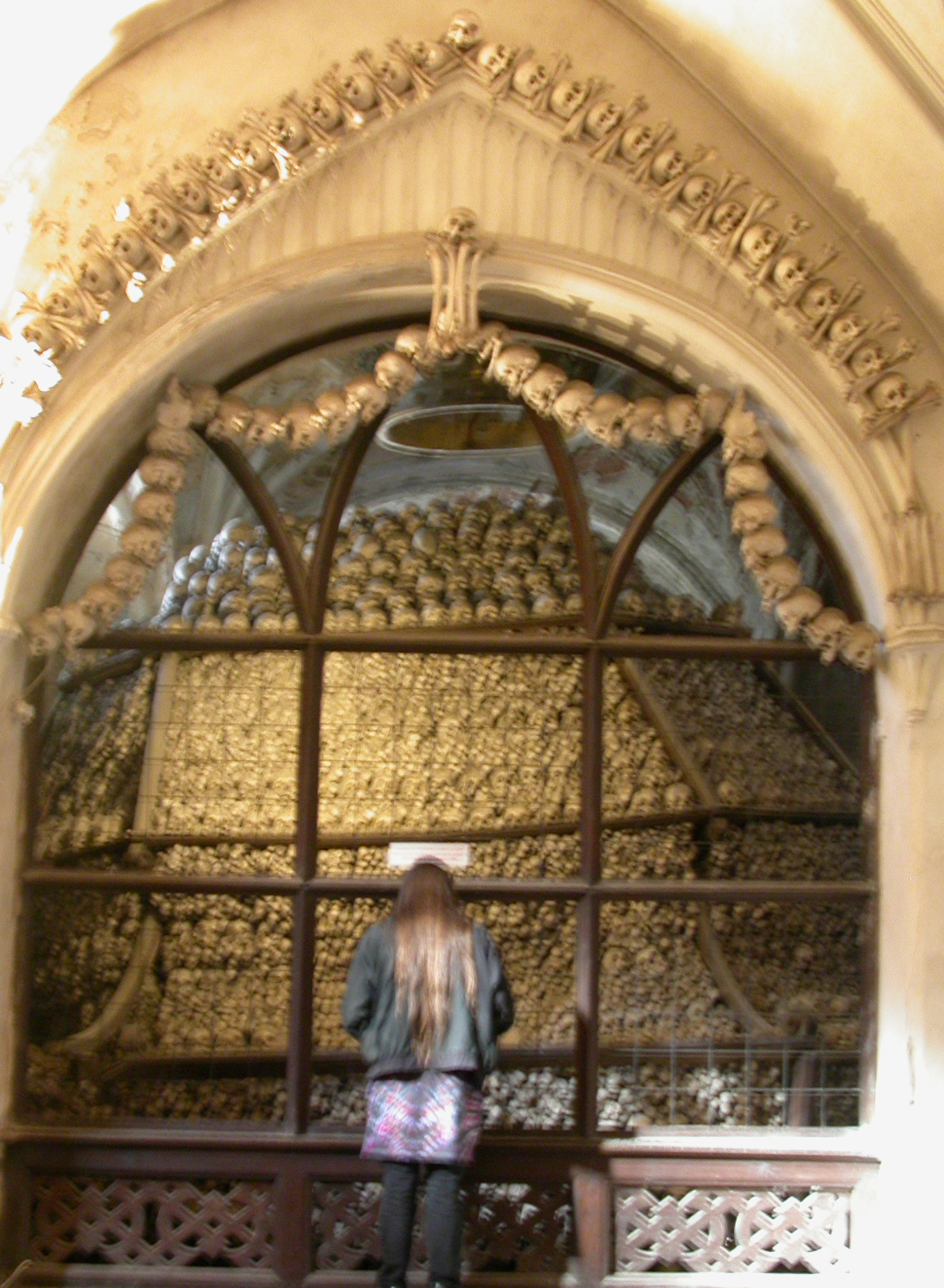
|
Even with all of these sculptures, though,
there are still a LOT of bones left over...
|
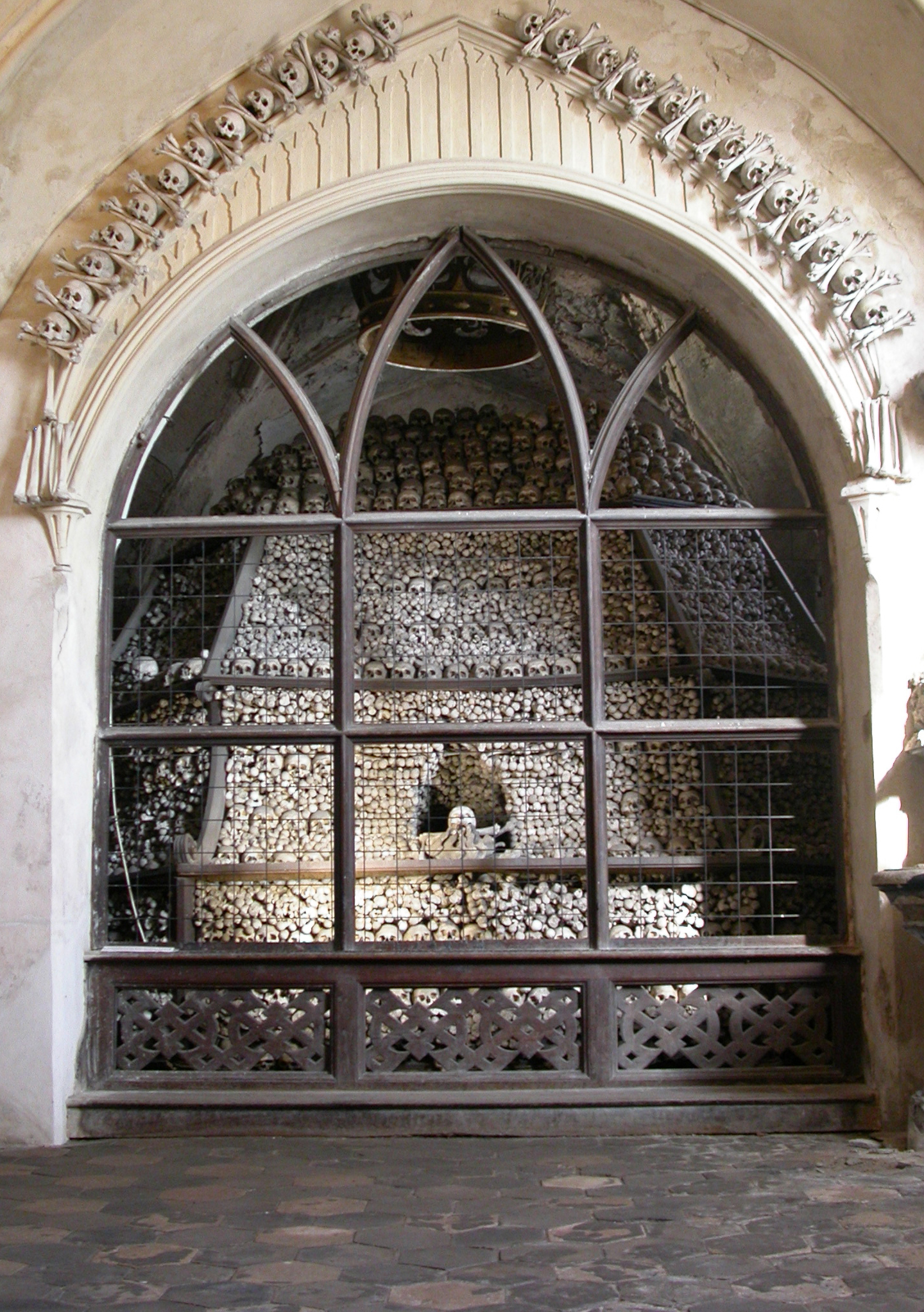
|
There are four of these chambers of bones, one
in each corner. (Note that there is one behind the coat of arms, too.)
|
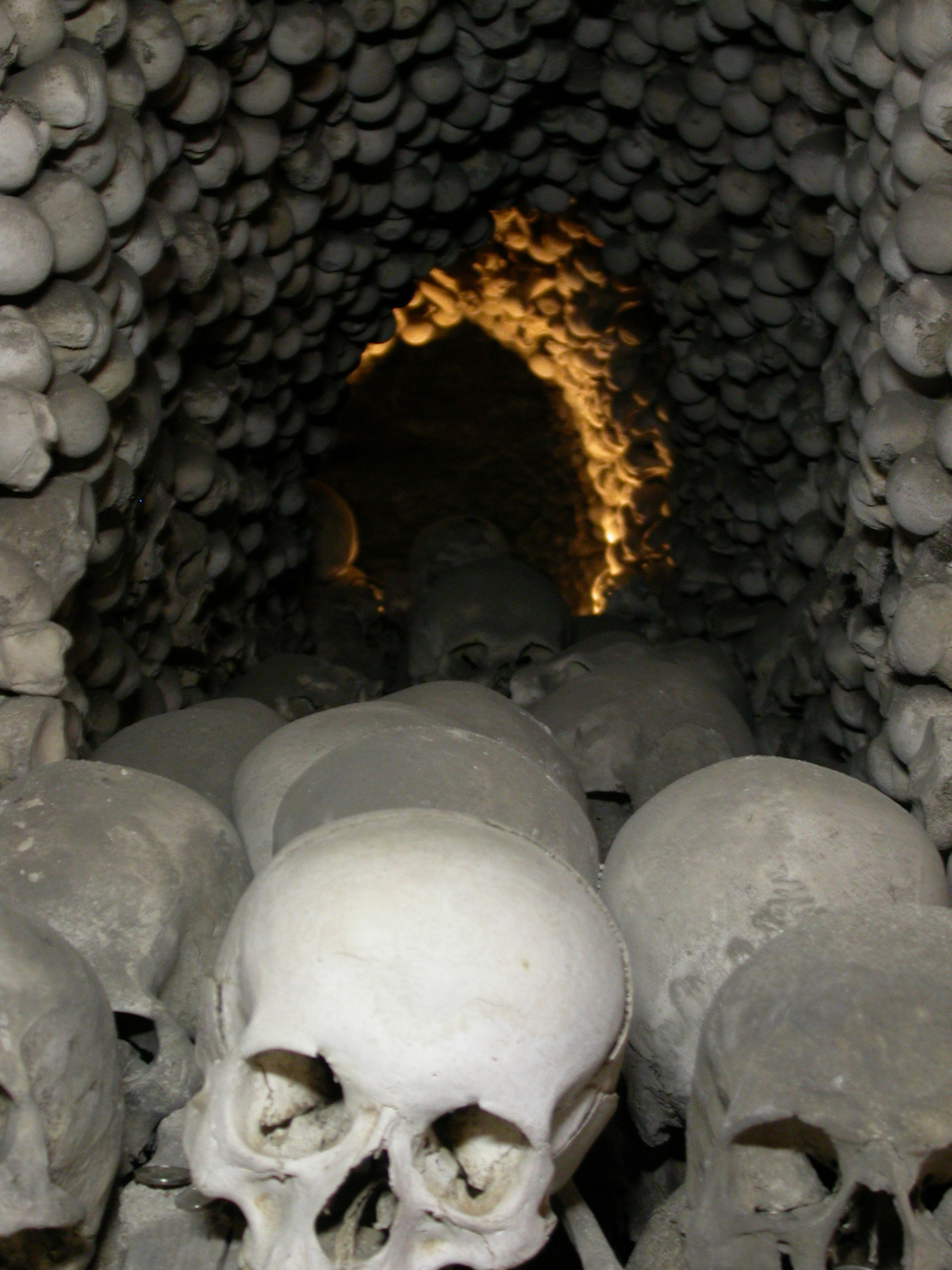
|
The tunnels made of long bones and scattered
with skulls.
|
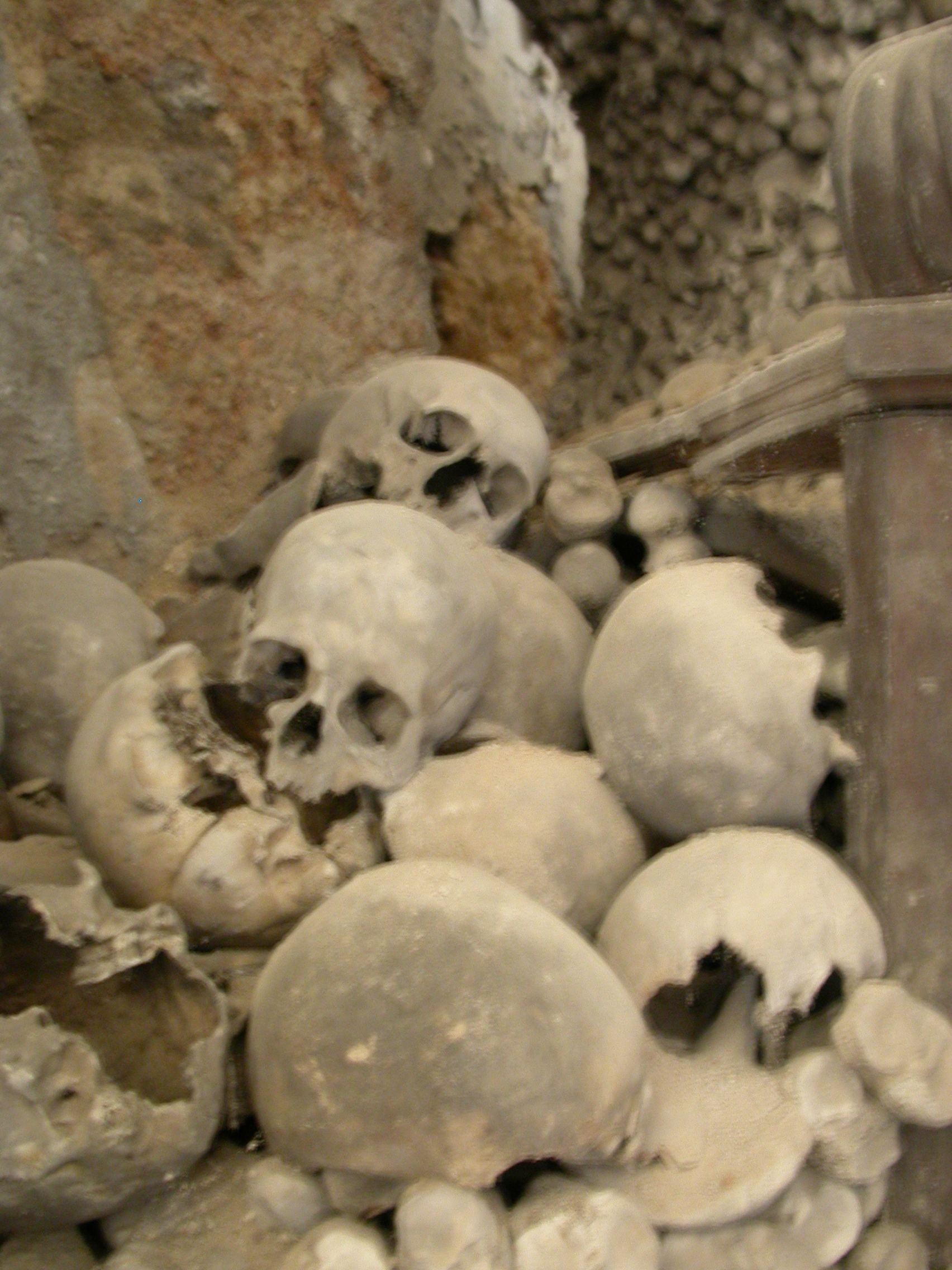
|
Even skull fragments were not left out,
although they are sometimes piled not-so-neatly in the corners.
|
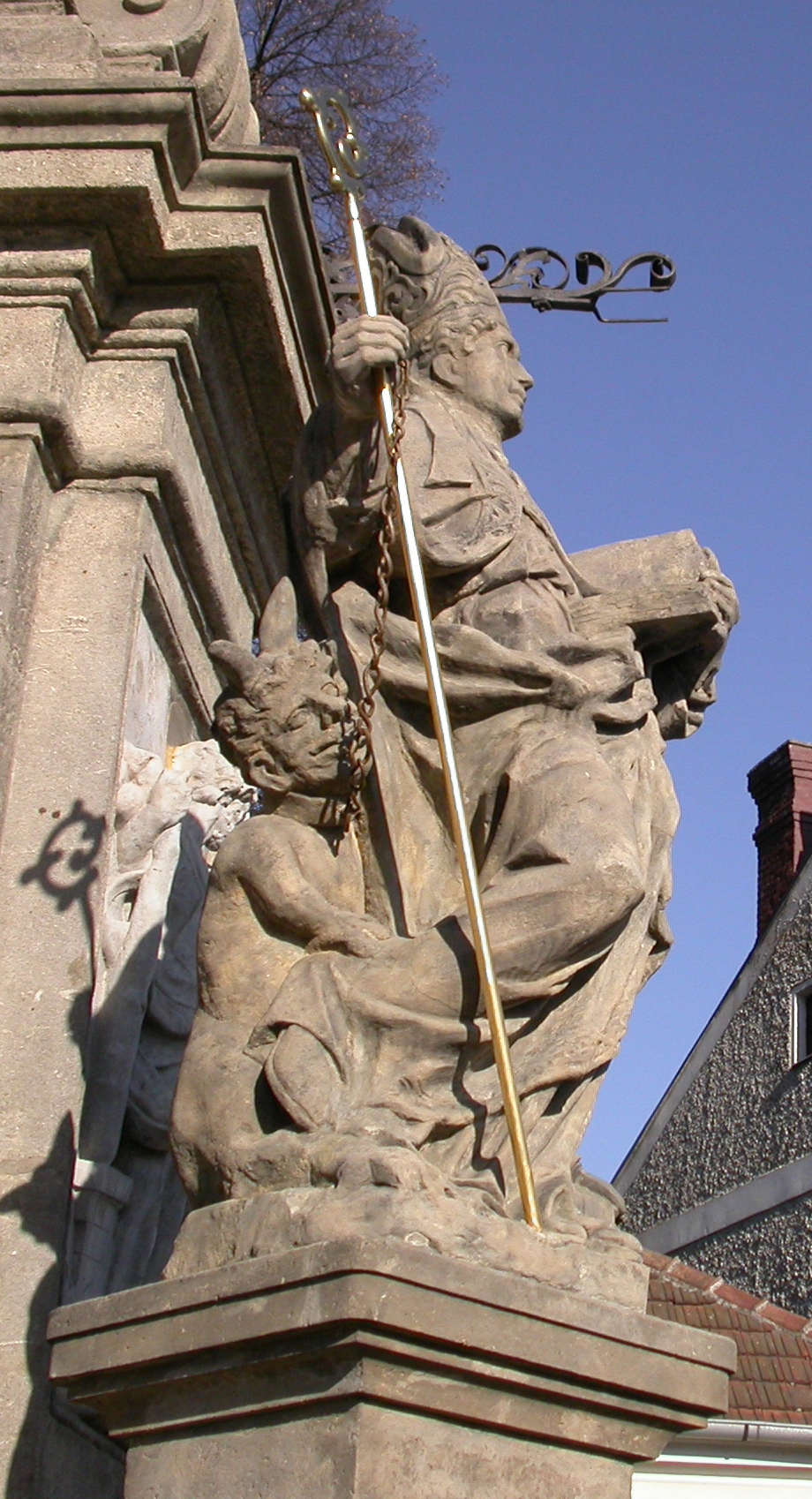
|
The graveyard outside seems bright and cheery
after hours in the cool, gray interior of the monestary. Even the
bishop with his pet demon seem welcoming.
|
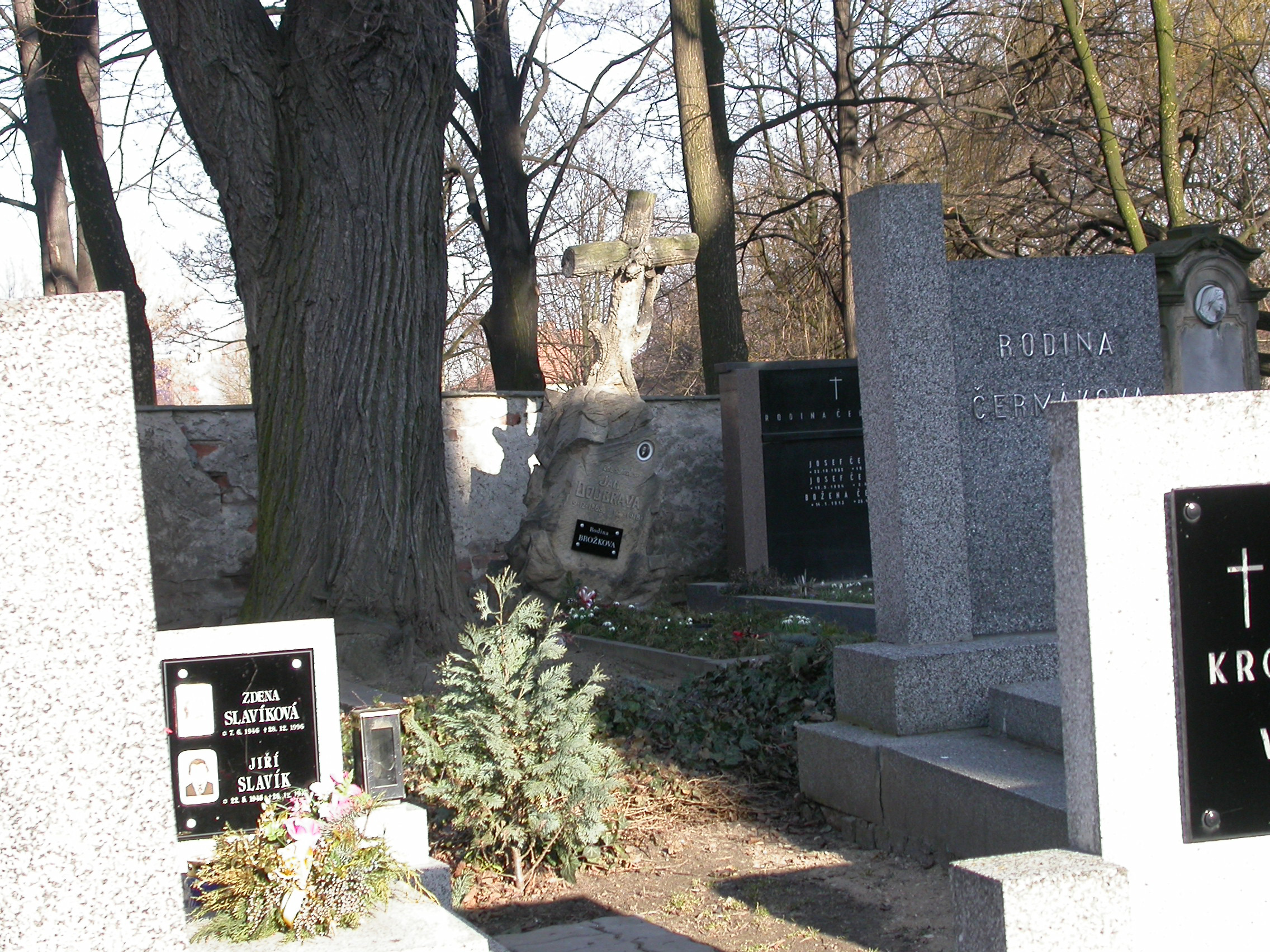
|
Has the tree uprooted the gravestone so that
the beam of the cross is paralell to the ground, or did they just make
the grave marker that way so it would fit in the available space?
|

|
Oblivious to his grim surroundings, this
little bird pecks at his reflection.
|

|
A close up of the little guy.
|





























































